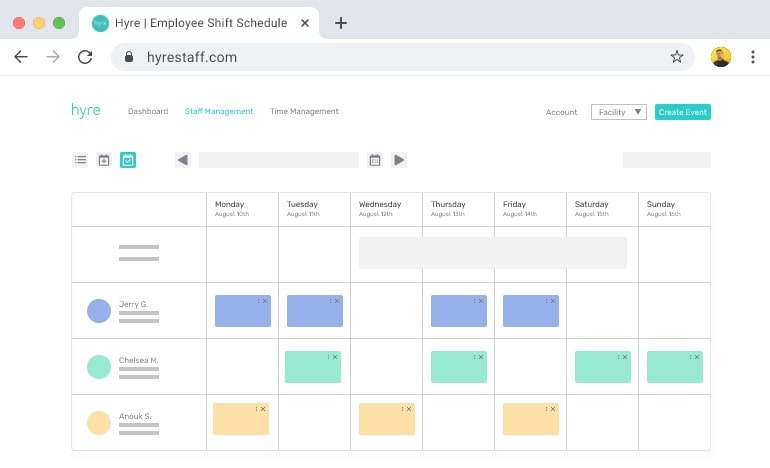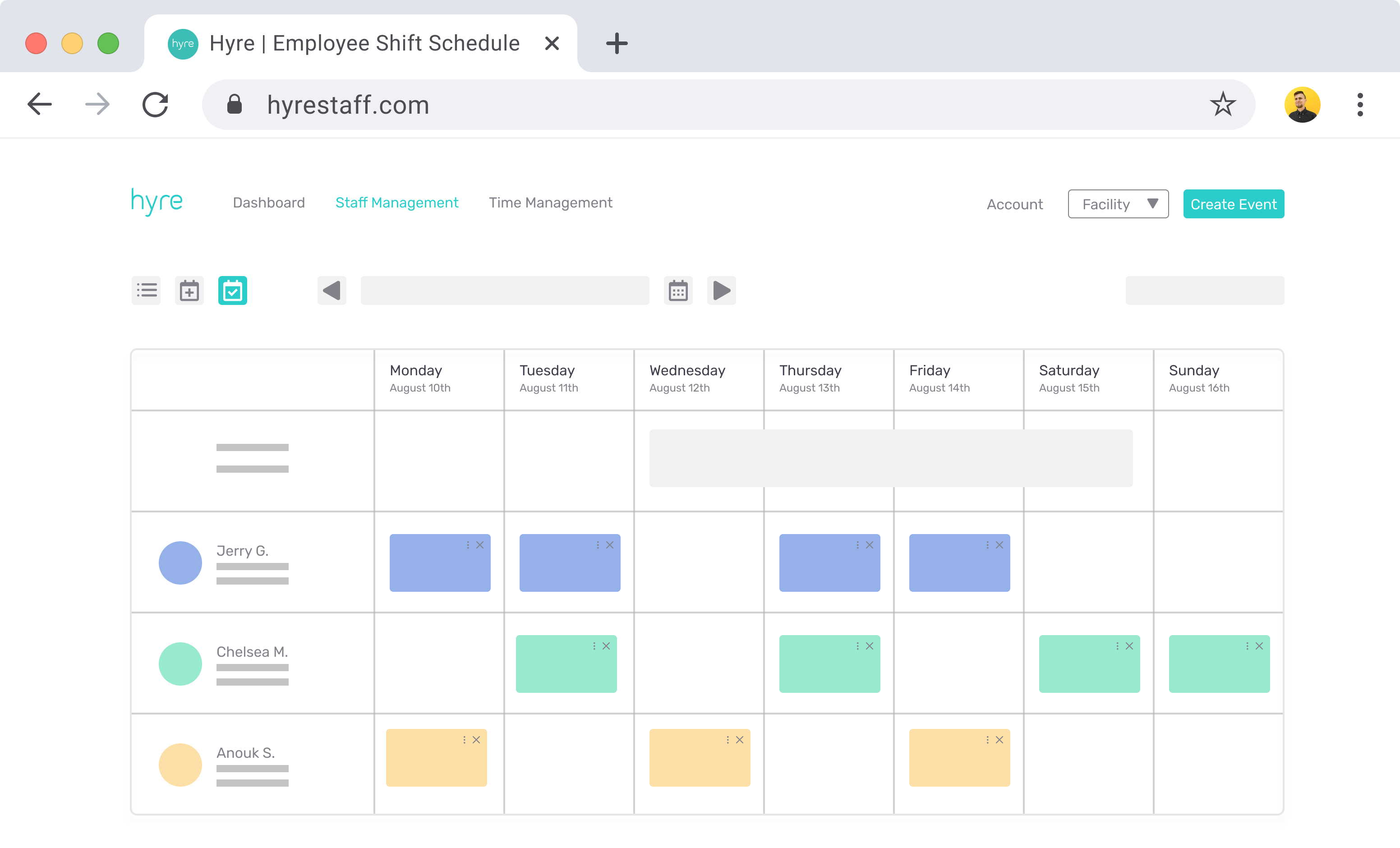Have you ever been scolded by a manager for being late to your shift? Most of us have shown up to work behind schedule at some point in our lives. Aside from being an anxiety-inducing experience, the repercussions to arriving late can impact our professional standing—ranging from a verbal warning to a pay deduction, and at worst, termination.

As a manager looking to understand how to make an effective employee attendance policy, your main objective is probably to ensure that your workers are 100% on time (or in reality, early) to their shifts. Punctuality in shift-based work environments is incredibly important as productivity revolves around the effective use of time. What’s more, hourly employees tend to work in fast-paced environments where absenteeism is a major problem that needs to be addressed in order for operations to run smoothly.
Why Is Addressing Punctuality and Absenteeism So Important?
Think about hourly employees in a restaurant. When it comes to employee attendance in a busy eatery, being late to a shift may result in the loss of customers. If a staff member doesn’t show up at all, the workflow will be disrupted for the entire day—creating extra work for a shift manager to find a substitute as quickly as possible and resulting in a bigger workload for everybody else.
Apart from the obvious consequences of absenteeism that negatively affect customer engagement and overall productivity, let’s take a look at some interesting findings:
- The Integrated Benefits Institute (IBI) reported that employees covered for sick time, workers’ compensation, disability, and family and medical leave benefits are absent for about 893 million days due to illness.
- There is an estimated number of 527 million lost workdays due to impaired performance. This totals 1.4 billion days annually of absent employees.
- According to the CDC Foundation, productivity losses linked to absenteeism in the US cost employers $1,685 per employee per year. As a result, the total cost of absenteeism amounts to around $225 billion annually.
As you can tell from the astonishing numbers above, absenteeism is expensive—and can be a major concern regarding the success of a business. Is there a way to prevent it? An employee attendance policy can be a solution.
What is an Employee Attendance Policy and How Can It Help?
An employee attendance policy is a set of rules and guidelines related to employee attendance created by a manager or a supervisor. It is designed to prevent absenteeism, set standards for expected time management practices in the workplace, and increase the overall productivity of staff.
An employee attendance policy is more than a document to display on the wall—demonstrating the importance of these guidelines in your workplace is key. As a manager or a business owner, one must make it clear to everyone that these rules are to be followed by every member of staff. This will give credibility to your employee attendance policy and ensure it is more likely to be followed effectively and diligently.
What Makes an Effective Employee Attendance Policy?
We asked the same question ourselves, researched the best employee attendance policies, and created our own version to share here with you—click the button below to download our resource for free! Read on to learn how to create an employee attendance framework to suit your needs.
Interested in Similar Resources? Get Hyre’s Employee Scheduling Template in Excel
Learn how to use Excel for scheduling and download our shift scheduling template to create your effective weekly schedule in 3 simple steps.
1. Start with a brief introduction
Indicate the purpose of the document to your employees at the beginning of your policy. You can touch upon your work environment, as well as expectations and standards for the company, or refer to employee morale. Here’s an example from our resource:
Employees at [Company Name] are expected to hold excellent attendance as a standard. Punctuality is the responsibility of all staff members. Being on time, following the schedule and working full shift hours are necessary to our business’s success. Being unavailable for work at scheduled shift hours, leaving shifts early, late arrivals are detrimental to our productivity and workflow. Unwarranted absence is penalized. Necessary changes in the schedule must be arranged in advance with supervisors.
Feel free to use this text for your employee attendance policy and modify the [Company Name] to reflect your organization.
2. Focus on simplicity and clarity
Next, you can proceed with outlining the employee attendance rules for your organization. Simplicity and clarity make your policy truly effective. Succinct information is easier for your employees to remember. Now, we’ll demonstrate how to make your policy easy to understand with examples from the absenteeism rules from our resource.
Create a separate “absence” section to structure the document clearly. The purpose of each section is to define an attendance issue and set rules that will help your staff be compliant and avoid getting penalized. A sentence or two is enough to define what being absent means in your workplace.
Absence
A staff member is deemed absent when they are unavailable to work as scheduled and the time off was not pre-scheduled or approved by the supervisor in advance.
-
- Employees must notify a supervisor at least [_____] in advance for [_]-day absence
Under the definition of absenteeism, set the rules that your staff must follow in point form. There, you can determine time limitations—for example, how many days/weeks prior your staff have to notify you to avoid being deemed absent. Try using numbers instead of words when you mention time limitations for easier comprehension. For additional examples of rules (i.e. tardiness and no-show rules), click here.
3. Make your employee attendance policy fair with a standard point system
Employees value fair and unbiased policies. A great way to make your policy more objective is by designing and implementing a point system in your workplace. You can decide yourself what behaviors are point-worthy, such as the attendance infractions listed below.
Attendance Infractions (in points)
Absence due to the emergency (supervisor is informed) – 0.5
Absence due to the emergency (supervisor is uninformed) – 1
Approved absence – 0.5
Unwarranted absence – 2
4. Be open about disciplinary actions
Having a point system is meaningless without enforced repercussions. Accumulating points could result in appropriate disciplinary action (shown below), removing the emotional factors of managing a late employee.
Overview of the Disciplinary Action
4 points – verbal warning
6 points – written warning
8 points – meeting with a supervisor
10 points – termination
Now you’re good to go!
The last step is making your employee attendance policy easily accessible to your staff. You can hand out printed copies to your employees, display a copy on the wall, or send out a digital version via email.
I hope that our resource will help you create a systematic attendance framework to foster a more organized and productive workplace. To help you with the ongoing task of monitoring points and communicating with your employees, we offer solutions that target the complexities of shift-based employment and simplify the attendance tracking process.

How do you manage employee attendance in your workplace? Share your thoughts in the comments below!
Complete the form below to receive your template by email.

Reduce Stress, Costs, and Turnover with Smart Shift Management
Switch from employee scheduling templates to Hyre’s employee scheduling software to enable your business with employee shift scheduling, automated timesheets, digital time clocks, team messaging, and a built-in temp staffing pool.
